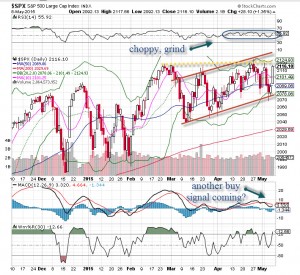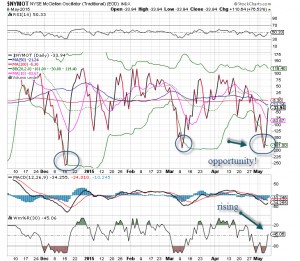The last few days serve as a perfect illustration of why talk is cheap – especially when it comes to investing and trading. Technical, chart, and market analysis will always – ALWAYS – beat the talking heads.
Despite non-stop chatter – predictions included – that were meant to raise red flags for equity market players, we had another up week, complete with a very strong day on Friday (the second consecutive Friday that posted a big gain).
Why all the talk? On Thursday, Fed Chair Janet Yellen made some “off the cuff” comments about equity valuations being “quite high,” yet we know that analysis is rather arbitrary. The valuation question is a valid one, but it is quite difficult to accurately predict when money will flee.
Meanwhile, many talking heads had expressed their view that a very strong jobs number would push the Fed toward raising rates sooner rather than later. The in-line jobs number for April was far better than March, yet we saw Fed Funds Futures rise, decreasing the chance of rate hikes coming anytime soon. The first fully priced 25 base point rate hike is now pushed out to January 2016.
The above two examples clearly demonstrate that, regardless of the jawboning Fed, economists, forecasters, analysts, and sundry talking heads, the MARKET is telling us what we should expect. This is market analysis 101 – learn it, live it, love it.
Therein lies the question of whether we should listen to predictions or just the market action. I have been a student of markets for many years and have learned that the market tells us the truth. I do not have to listen to anyone to know where price is headed. Even Investors Business Daily agrees with me:
Whatever skills Federal Reserve heads have, analyzing the stock market isn’t one of them. Fortunately, there is a better alternative: the market itself. The market is constantly giving feedback, and those clues are more useful than individual opinions.
The key to making money in stocks is not to get scared out of them.





















